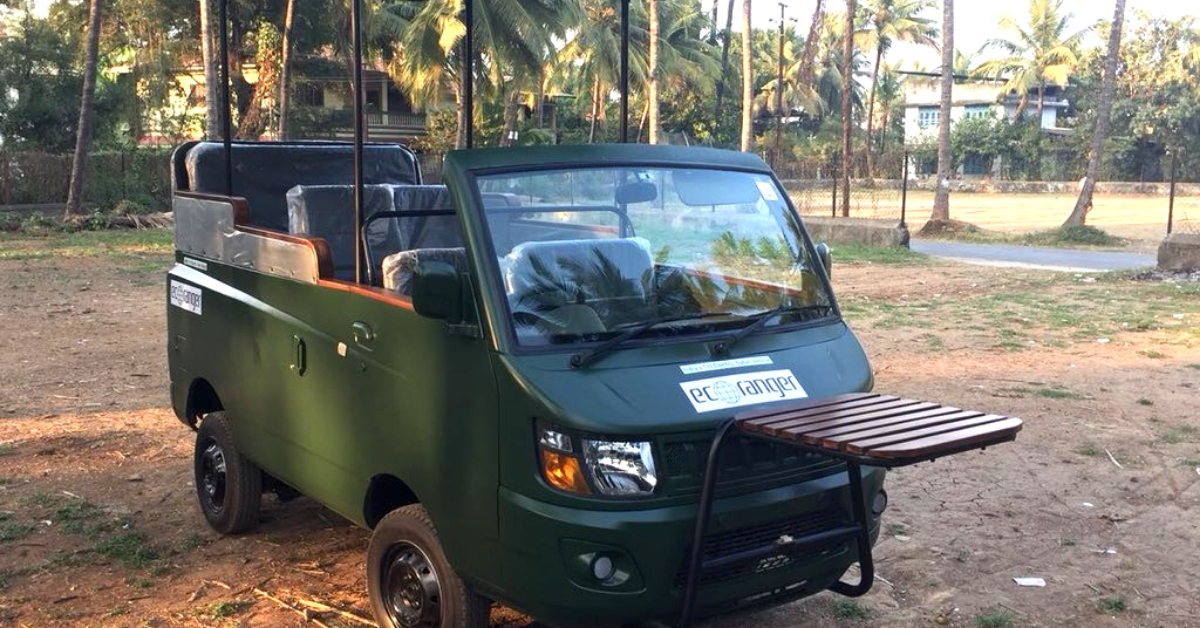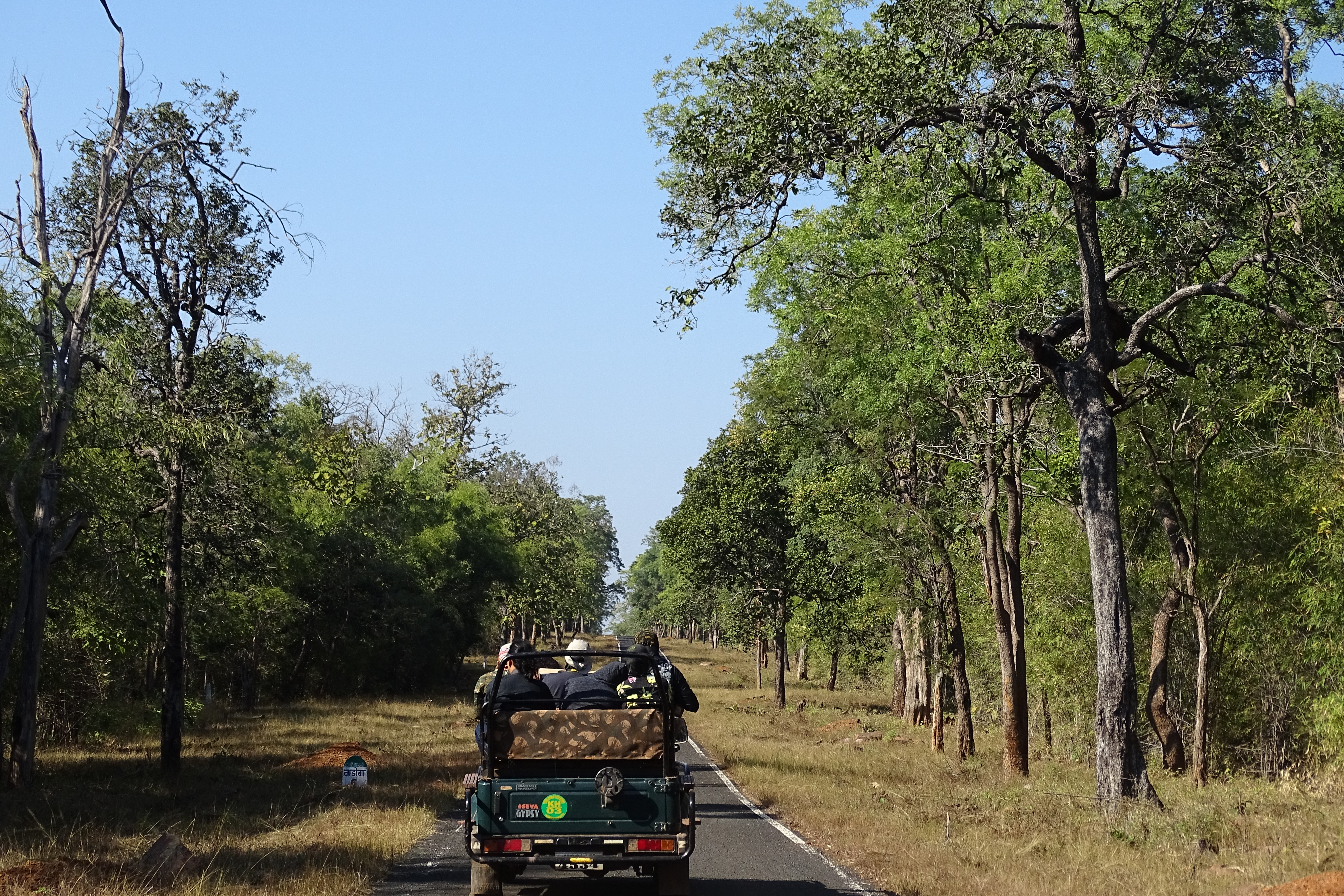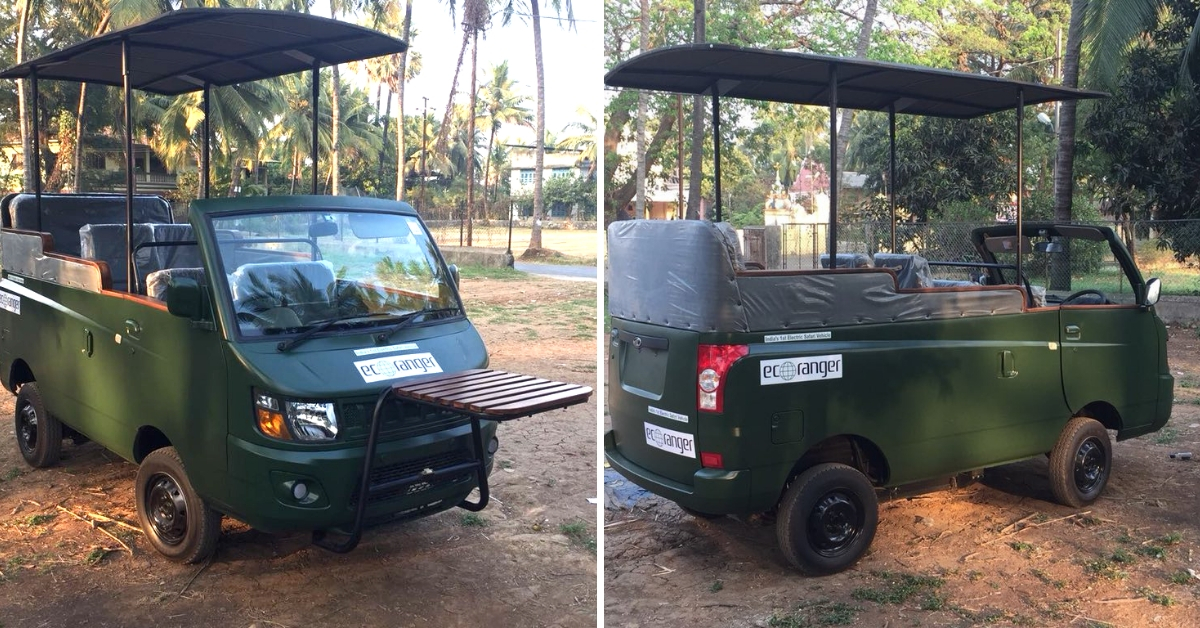Safari in Silence: Tadoba, Sariska Tiger Reserves Go Greener, Get Electric Cars
“Now the wild can breathe free. India’s first e-vehicle as Jungle safari van on e-Supro. Launched in Tadoba Tiger Reserve in Maharashtra…”

We were a group of six friends, huddled together in the gypsy, excitedly waiting for the first safari of our trip to the Tadoba Andhari Tiger Reserve to begin.
It was an exceptionally cold morning, and we knew that the chances of spotting a mammal or a rare bird were slim.
While I was most certainly freezing, I was also slightly bothered by the gypsy.
In the forest that was completely silent—we couldn’t even hear bird calls—the car was rumbling along the muddy tracks.

I turned to check the exhaust pipe. As expected, the thin trail of black smoke it was emitting, was contaminating the beautiful forest that the guards and officials have been trying to protect with great determination.
Taking this concern to a policy level, the TATR has collaborated with Mahindra & Mahindra Electric for an eco-alternative to fuel driven cars like the gypsy.
Consequently, the eKUV100, Mahindra’s electric four-wheeler, will now be driven inside the tiger reserve.
Mahesh Babu, the CEO of Mahindra Electric said on Twitter, “Now the wild can breathe free. India’s first e-vehicle as Jungle safari van on e-Supro. Launched in Tadoba Tiger Reserve in Maharashtra…”
Now the wild can breathe free. India’s first e-vehicle as Jungle safari van on e-Supro. Launched in Tadoba Tiger Reserve in Maharashtra. Congrats to creative Mahindra VAP team… pic.twitter.com/usZDAzgAbL
— Mahesh Babu (@Maheshsbabu) March 24, 2018
This switch will ensure that the forest remains free from both air and sound pollution.
However, there are a few concerns. Battery capacity is one, and if the vehicle discharges after the car enters the gates of the reserve, there is no viable option to bring it out.
You may also like: ‘Elephants Do Not Go to Office’: Apex Court Confirms Jumbo’s Rights to Forest Routes
Addressing these concerns, NR Praveen, field director at TATR informed the Times of India, “During trials we found that even after running for four hours in the forest, it had 20% charge in the battery.
It also has a reserve capacity, and when the vehicle reaches reserve stage it has to be charged for eight hours or else the battery gets fully recharged in three hours before that stage.”

After a successful test drive in Tadoba, the Sariska Tiger Reserve in Alwar, Rajasthan will also follow suit.
These cars will accommodate six passengers (apart from the driver and the forest office-assigned guide). They will also cost the same as the current rides.
These electric cars by Mahindra are certainly good for our forest reserves. Tourists will now be able to marvel at the jungles without worrying about whether all they are leaving behind is disturbance and pollution.
(Edited by Gayatri Mishra)
Like this story? Or have something to share? Write to us: [email protected], or connect with us on Facebook and Twitter.
If you found our stories insightful, informative, or even just enjoyable, we invite you to consider making a voluntary payment to support the work we do at The Better India. Your contribution helps us continue producing quality content that educates, inspires, and drives positive change.
Choose one of the payment options below for your contribution-
By paying for the stories you value, you directly contribute to sustaining our efforts focused on making a difference in the world. Together, let’s ensure that impactful stories continue to be told and shared, enriching lives and communities alike.
Thank you for your support. Here are some frequently asked questions you might find helpful to know why you are contributing?


This story made me
-
97
-
121
-
89
-
167













